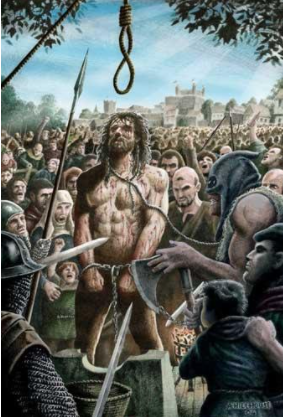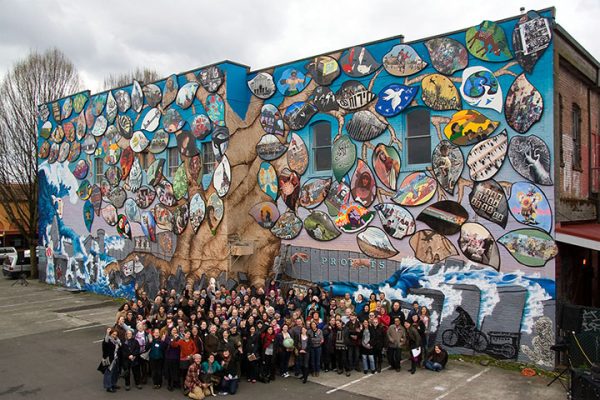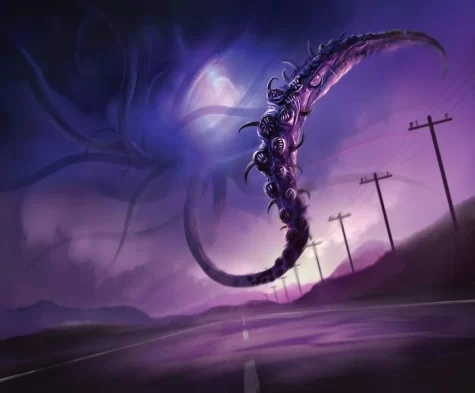The Injustice Held in Historically Inaccurate Movies
May 13, 2021
*Pictured is William Wallace before he was killed*
The Injustice held in Historically Inaccurate Movies
Why do we, as a populus, enjoy not only creating, but enjoying movies documenting and sometimes romanticizing some of the worst moments in human history? There are multiple reasons for why we insist on reliving and recreating these moments and the short answer is that there is great purpose in retelling a story, but why make the movie if we insist on diluting the facts with a Hollywood happy ending?
To start, historically based movies always try their best to portray the reality of the events in which they are set. However, all but a few usually fall short of capturing the true horror of what these situations were like for those who endured them. Some events can be described as so equally matched in tragedy and horror that to then make a movie about it and fail to give justice to the actual events should be a crime. This failing is sometimes the result of cinematic freedom while other times it’s the result of modern audiences’ sensitivities. Either way, it is worthwhile to review what these situations were really like and to recall their true horror so as to not romanticize the past or become complacent about tragedy.
As said there are innumerable cinematic pieces that we could list and analyze for how they dropped the ball, but only 3 shall be delved into, picked for their inaccuracy and/or prominence in notability. The first being Titanic, once the highest grossing movie ever, sustaining a 15 week run at the top of the US box office, winning 11 Oscars, and having a multi- million selling soundtrack to its name, is arguably the most impacting film Hollywood has ever produced. There’s no denying that James Cameron’s film shows the tragic sinking in a truly dramatic way, however the film shies away from the tragic reality that the doomed passengers and their rescuers actually faced. In the days after the sinking, the waters around the area where the Titanic sank became an open-air graveyard with hundreds of floating bodies clustered on the surface. Horrific sights of women clutching children, whole families linked together, some even with bullet wounds telling us something of the chaos that took place during the ship’s last moments. On top of that, while the film version of the Titanic disaster displays a tragic end to the relationship between Jack and Rose, with Rose surviving atop a makeshift wooden raft and Jack dying, it is more likely that in reality they would have both succumbed to hypothermia far sooner than shown in the film. The water temperature in the far North Atlantic in April is near freezing cold and unprotected exposure would have led to very rapid hypothermia and cold shock which would have caused death within around 15 minutes. As such it is likely that, having been already soaked by the freezing water, Rose would have also quickly died of hypothermia in spite of her lying on top of the raft.
In continuation of our movie escapade, “Braveheart”, a critical and box office success making more than 210 million dollars worldwide, is renowned for historical inaccuracies in its portrayal of the story of William Wallace and his struggle against the English. The most devastating aspect of the real-life tragedy not shown properly in the film is the end scene which depicts Wallace’s execution. In the heart-rending movie, we see Wallace’s face contorted with pain before he is decapitated, but we are spared the truly horrific reality of what actually happened. For example, in reality, Wallace was stripped naked and dragged through the streets of London for five miles at the heels of a horse. Reports also account that Wallace was whipped and had rotten food thrown at him on his way to the gallows. Where once there, Wallace was hung, castrated, and disemboweled while still alive before being decapitated. After this deplorable death, Wallace’s body was split into four sections and displayed in different towns around Scotland. His head impaled on a spike in London. The method of punishment, used explicitly for those who commit high treason was known as ‘hung, drawn, and quartered.’
Finally, Hotel Rwanda, a movie based on, in my opinion, one of the most devastating, appalling moments of human violence, the Rwandan Genocide. The 2004 film was successful in bringing the attention of Westerners to the truly grievous 1994 atrocity during which one million members of the Rwandan ethnic group, known as the Tutsi, were exterminated by another group known as the Hutu. The movie in discussion tells the true story of the hotel manager Paul Rusesabagina who, during the genocide, sheltered many Tutsi refugees inside his hotel from the Hutu militias who wanted to kill them. However, the film fails to portray the true horror of the genocide and its aftermath. According to some Tutsi survivors Rusesabagina extorted money from those in hiding demanding money in return for their survival. It has been alleged that Rusesabagina did everything he could to not only remove UN peacekeepers from the hotel’s entrance, but also aid the Rwandan Army by providing a list of those sheltered in his hotel. The grass was no greener on the other side for following the ending of the film, where Rusesabagina and his wife are said to have been evacuated to a well run UN refugee camp, is unrealistic. In reality, it was more of a “looting zone” where both Rusesabagina and his wife had to forage for food in order to avoid starvation. He accused the film’s directors of creating a “Hollywood style ‘happy ending’ for the film” which served to be a far outcry from the true events.
In short, these people were real and had lives and though not all of them were saints; they all had the same right to life. In these abject events where their lives were wretched from the world in ways that we could hope to never experience, the very least we can do is accept their reality with open minds and not allow ourselves to shy away from what they experienced. However, what is even more important is to do them justice by telling their story so that they can never be forgotten and history won’t repeat itself.









